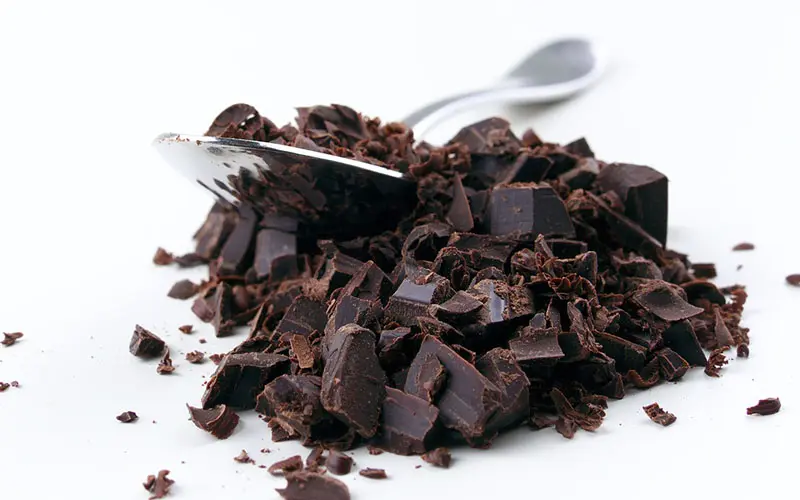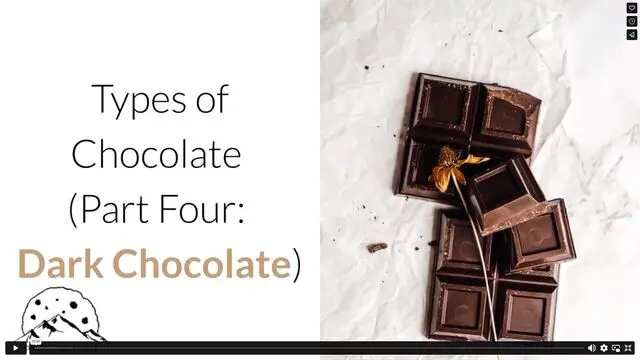Dark chocolate has been around the longest time of all types of chocolate, so it makes sense that people see it as a decadent addition to any dessert. You can dip fruit into it, mix it into cakes, mousses, ganache, and cookies, or even shave a little bit on the top of your dessert to make things extra fancy. Its rich, antioxidant properties also make it the perfect treat to send as a thinking of you gift, sympathy gift, or get well gift for when your friends and loved ones need an extra boost.
This article concludes our four-part series on the different types of chocolate (you can read about ruby chocolate, white chocolate, and milk chocolate using these links), but there is still plenty of interesting information to learn about dark chocolate. After all, dark chocolate was the chocolate that started it all, and though it has changed a lot since the first human tried it, it has and always will be a favorite treat to many.

(elsenaju / pixabay)
The Chocolate Drink
The earliest evidence of people eating dark chocolate goes back about three thousand years, though most people credit the Mayans and Aztecs for making dark chocolate the “in thing” to drink. That’s right – drink. It wasn’t until a couple hundred years ago that you could consume chocolate any other way than drinking it in a hot or cold beverage.
The Mayans and Aztecs perfected the drink in their own right by adding additional spices and pouring it from cup to cup to make it nice and frothy. Even though most ancient people had access to this chocolate drink, it was generally considered the drink of the wealthy, so when the conquistadors came a-calling, South American nobility enthusiastically shared the treat.
Dark chocolate is very bitter on its own, and even with the addition of South American spices, this new drink didn’t sit very well with the Spanish. They decided to improve upon the recipe by adding sugar and eliminating some of the native spices like chili. With their modifications, drinking chocolate exploded across Europe pretty quickly. Chocolatiers and chocolate houses tried their level best to keep improving chocolate’s taste and satisfy the masses’ demand for chocolate.
Significant Inventions
Some important events had to happen before we could have the beloved dark chocolate bars that fill the supermarket checkout aisles. Here are a few of the game-changers that rocked the dark chocolate world:
1. Van Houten Cocoa Press (1828): The van Houten hydraulic cocoa press squeezed about half of the cocoa butter out of the crushed-up cocoa beans, leaving behind a block of cocoa powder. This was revolutionary because all of that excess cocoa butter (AKA fat) made it difficult to combine other ingredients like milk and sugar completely. The press essentially made the cocoa nearly dissolvable, which opened up a whole new realm of possibilities.
2. Dutch Process (1846): The van Houtens did it again when Coenraad van Houten figured out that he could process the cocoa with alkaline salts, making what we now call “Dutch Process Cocoa.” This new procedure created a cocoa powder that was even more dissolvable and had a less bitter, more chocolatey taste.
3. The Chocolate Bar (1847): Joseph Fry was the first person to press chocolate into the bar shape we know and love today. He discovered that by removing a lot of the cocoa butter initially and then adding it back in with the sugar and cocoa powder, he could press the mixture into a mold that yielded a solid chocolate bar. This invention made it so people could eat solid chocolate instead of drinking it or using it in baked confections. It really was a historical moment for chocolate lovers everywhere.
4. The Candy Bar (1866): Fry made history again when he created the first chocolate-coated candy bar. Called the “Chocolate Cream,” his dark-chocolate-coated-nougat candy bar paved the way for chocolatiers in the future.
5. Conching (1879): Rudolph Lindt invented a machine called “The Conche,” which ground up, mixed, and aerated the melted chocolate so that it became silky smooth. Prior to his invention, chocolate of any form came in hard, gritty, dense blocks that were tasty but difficult to chew. Chocolatiers still use his conching process, though the machines are more efficient than they were in Lindt’s day.
Dark Chocolate Varieties
One of the neat things about dark chocolate is that the lack of additional ingredients allows chocolatiers to highlight the differences in where the beans are harvested. Different regions’ cocoa beans have different flavor profiles, so chocolate makers can mix and match cocoa beans to make truly unique dark chocolate without any ingredients other than sugar. Fruity, spicy, nutty, caramelly, grassy, floral, and bitter are just a few of the different flavor profiles you will find in different dark chocolate bars. This versatility makes dark chocolate perhaps the most exciting of all the chocolates when you experiment with other food pairings.
We could go on and on about the virtues of eating dark chocolate, but suffice to say, it is a treat that knows no bounds. So go ahead and eat it straight from the bar or chop it up into some gourmet chocolate chip cookies, and enjoy a little bit of heaven today.
Video

